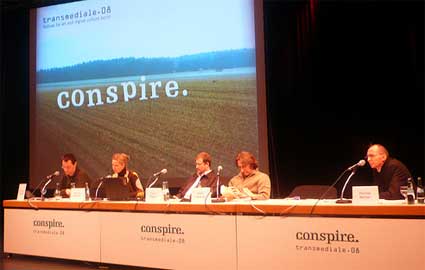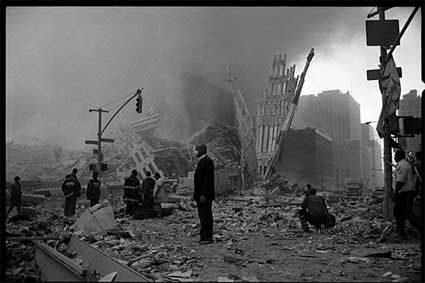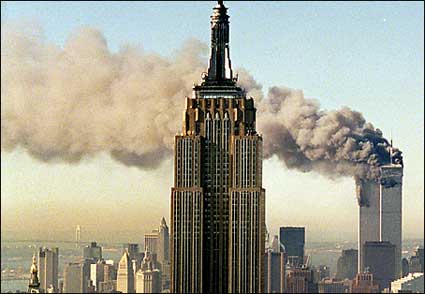I am quite enthusiastic about this year’s edition of Transmediale. The theme was Conspire and as such it attempted to enter the increasingly prevalent yet ambiguous worlds of network induced narratives, cryptic environments and speculative inquiry. As far as i can tell (i missed the three first days of the festival), the festival delivered its promises.
Here are the notes i took during the talk of Eva Horn who was part of Session 4: Techno-Historical Collusions: The Making Of A Trojan Horse. This session investigated the way politics, narrative, technology and belief systems collude.
 From left to right: moderator: Florian Cramer. Speakers Eva Horn, Trevor Paglen, Pierre Lagrange and brespondent: Konrad Becker
From left to right: moderator: Florian Cramer. Speakers Eva Horn, Trevor Paglen, Pierre Lagrange and brespondent: Konrad Becker
Eva Horn is a professor of German Literature at the University of Basel. Her research focuses on literature and war in the twentieth century. She has recently finished a manuscript titled The Secret War: Espionage, Treason and Modern Literature (in German). She is the author of “Knowing the Enemy: The Epistemology of Secret Intelligence” (Grey Room).
In her talk, Eva Horn analyzed conspiracy theories that have emerged after 9/11 as an example of a political discourse in the internet.
Unlike the assassination of John F. Kennedy, the 9/11 tragedy didn’t appear at first sight as a conspiracy. Several other explanations were proposed on the first few days which followed 9/11.
She quote President Bush, in a talk to the United Nations, urged people to reject conspiracy theories:
Let us never tolerate outrageous conspiracy theories concerning the attacks of September the 11th; malicious lies that attempt to shift the blame away from the terrorists, themselves, away from the guilty.
The main catch phrase in the discourse about the perpetrators of 9/11 is the term “Network(s)”. Another quote from the National Security Strategy offices:
Enemies in the past needed great armies and great industrial capabilities to endanger America. Now, shadowy networks of individuals can bring great chaos and suffering to our shores for less than it costs to purchase a single tank. Terrorists are organized to penetrate open societies and to turn the power of modern technologies against us.
This text emphasizes the cheapness of this kind of strategy. It also blurs the line between individual and political acts. 9/11 here is about networks. Invisible, latent networks become all of a sudden visible.
Mathias Bröckers‘s work “The WTC Conspiracy” tries to list facts that do not agree with the official version of the event. It has been translated into english only very recently. Can’t find any trace of it
History Commons is an interactive timeline projects everyone can contribute to by adding facts (not opinions) relevant to the 9/11 events. The website provides users with detailed information about and around 9/11. Minute by minute. It also engages with the roads that led to 9/11. The aim is not to try and sell any coherent truth but rather to raise questions and point out incoherences in the official version. The timeline is not complete but provides an open source material that gives readers an idea of how complex the structure of politics is. The time line does not identify a clear and simple cause of the events, it doesn’t point to precise alliances with a neat cut between friends and enemies, there is no well-defined causes that lead to conclusions. Instead it demonstrates the hypercomplexity one has to face when trying to understand 9/11.
 USA. New York City. September 11th, 2001. As people work around him, a minister stands amid the wreckage of the World Trade Center, seemingly dazed from the events of the day. © Larry Towell/Magnum Photos
USA. New York City. September 11th, 2001. As people work around him, a minister stands amid the wreckage of the World Trade Center, seemingly dazed from the events of the day. © Larry Towell/Magnum Photos
Horn then showed an extract of the movie Loose Change which, unlike the timeline, has a narrative and a view on what the “truth” is in this context.
The documentary film, made by film students using recycled footage, claims that 9/11 was a mock terrorist attack and that the events had in fact been orchestrated by the United States government, and bases these claims on perceived anomalies in the historical record of the attacks.
Loose Change 2nd Edition Online Version (Google Video):
For Horn, conspiracy theories are a way to deal with the impenetrable complexity and connectivity of politics and other factors. When dealing with high complexity we have to recognize our loss of control: we can’t name the culprit anymore, we loose clear distinctions between friends and enemies, etc. Theories allow you to get back to a sense of control behind what happened. The idea that US secret services couldn’t prevent the event looks too much like a loss of control. But with a theory such as the one exposed in Loose Change”, we don’t lose control over just “10 Arabs in a cave”. This sort of political discourse negates global complexity and connectivity.
We have to abandon the claim to absolute truth.

